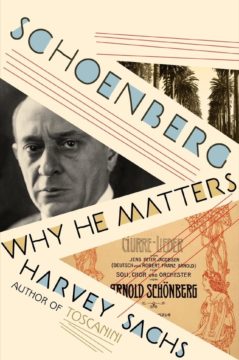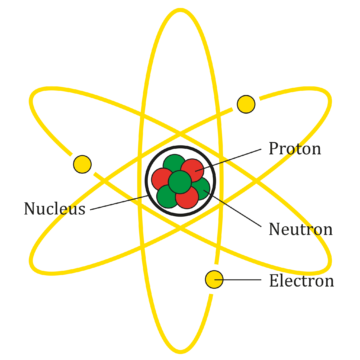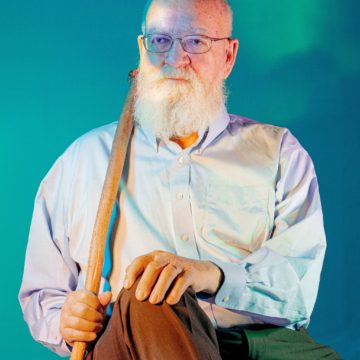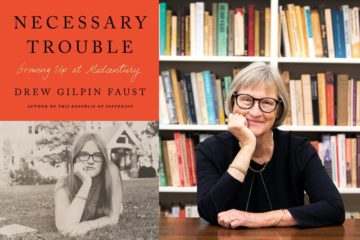Category: Archives
A carbon tax on investment income could be more fair and make it less profitable to pollute – a new analysis shows why
Jared Starr in The Conversation:
 About 10 years ago, a very thick book written by a French economist became a surprising bestseller. It was called “Capital in the 21st Century.” In it, Thomas Piketty traces the history of income and wealth inequality over the past couple of hundred years.
About 10 years ago, a very thick book written by a French economist became a surprising bestseller. It was called “Capital in the 21st Century.” In it, Thomas Piketty traces the history of income and wealth inequality over the past couple of hundred years.
The book’s insights struck a chord with people who felt a growing sense of economic inequality but didn’t have the data to back it up. I was one of them. It made me wonder, how much carbon pollution is being generated to create wealth for a small group of extremely rich households? Two kids, 10 years and a Ph.D. later, I finally have some answers.
In a new study, colleagues and I investigated U.S. households’ personal responsibility for greenhouse gas emissions from 1990 to 2019. We previously studied emissions tied to consumption – the stuff people buy. This time, we looked at emissions used in generating people’s incomes, including investment income.
More here.
Sacha Baron Cohen’s Speech on Standing Against Hate: ‘We Always Have a Choice’
From Time Magazine:
 As Borat, the first fake news journalist, I interviewed some college students—three young white men in their ballcaps and polo shirts. It only took a few drinks, and soon they were telling me what they really believed. They asked if, in my country, women are slaves. They talked about how, here in the U.S., “the Jews” have “the upper hand.” When I asked, do you have slaves in America?, they replied, “we wish!” “We should have slaves,” one said, “it would be a better country.” Those young men made a choice. They chose to believe some of the oldest and most vile lies that are at the root of all hate. And so it pains me that we have to say it yet again. The idea that people of color are inferior is a lie. The idea that Jews are dangerous and all-powerful is a lie. The idea that women are not equal to men is a lie. The idea that queer people are a threat to our children is a lie.
As Borat, the first fake news journalist, I interviewed some college students—three young white men in their ballcaps and polo shirts. It only took a few drinks, and soon they were telling me what they really believed. They asked if, in my country, women are slaves. They talked about how, here in the U.S., “the Jews” have “the upper hand.” When I asked, do you have slaves in America?, they replied, “we wish!” “We should have slaves,” one said, “it would be a better country.” Those young men made a choice. They chose to believe some of the oldest and most vile lies that are at the root of all hate. And so it pains me that we have to say it yet again. The idea that people of color are inferior is a lie. The idea that Jews are dangerous and all-powerful is a lie. The idea that women are not equal to men is a lie. The idea that queer people are a threat to our children is a lie.
At other times, I’ve seen people make a different choice. As Borat, I once got an entire bar in Arizona to sing, “Throw the Jew down the well”—which revealed people’s indifference to anti-Semitism. But when I tried to film that same exact scene at a bar in Nashville, something different happened. People started to boo. And then they chased me right out of that bar. Those people made the choice that brings us all here today—they chose to belief the truth: the truth that we are all deserving of respect, dignity, and equality, no matter who we are, what we look like, how we pray, or who we love.
We always have a choice.
More here.
A DIY ‘bionic pancreas’ is changing diabetes care — what’s next?
Liam Drew in Nature:
 Ten years ago, a tech-savvy group of people with type 1 diabetes (T1D) decided to pursue a DIY approach to their own treatment. They knew that a fairly straightforward piece of software could make their lives much easier, but no companies were developing it quickly enough. What this software promised was freedom from having to constantly measure and control their blood-glucose levels. In people without T1D, when glucose levels rise, cells in the pancreas release insulin, a hormone that helps tissues to absorb that glucose. In T1D, these cells are killed by the immune system, leaving people with the condition to manage their blood sugar by taking insulin. “It is almost inhumane,” says Shane O’Donnell, a medical sociologist at University College Dublin, who, like everyone quoted in this article, lives with T1D. “You’re constantly having to think about diabetes in order to survive.”
Ten years ago, a tech-savvy group of people with type 1 diabetes (T1D) decided to pursue a DIY approach to their own treatment. They knew that a fairly straightforward piece of software could make their lives much easier, but no companies were developing it quickly enough. What this software promised was freedom from having to constantly measure and control their blood-glucose levels. In people without T1D, when glucose levels rise, cells in the pancreas release insulin, a hormone that helps tissues to absorb that glucose. In T1D, these cells are killed by the immune system, leaving people with the condition to manage their blood sugar by taking insulin. “It is almost inhumane,” says Shane O’Donnell, a medical sociologist at University College Dublin, who, like everyone quoted in this article, lives with T1D. “You’re constantly having to think about diabetes in order to survive.”
Members of the nascent DIY community were using the most sophisticated technology available: insulin pumps and wearable devices called constant glucose monitors. But they still had to read the monitor’s data, forecast their diet and exercise and then calculate the appropriate insulin dose. What they wanted was automation — an algorithm that would analyse glucose data and program the pump itself. Coalescing around this aim in 2013, the community debuted a hashtag: #WeAreNotWaiting. Then, in February 2015, group member Dana Lewis shared the code for an algorithm that she and two collaborators had developed and tested.
More here.
On Harvey Sachs’s “Schoenberg”
Judith Finell at the LARB:
 ARNOLD SCHOENBERG (1874–1951) was a pivotal figure in the development of 20th-century music. Of the thousands of composers who came before and after him, he stood alone both as the embodiment of the high Romanticism of the 19th and early 20th centuries led by Gustav Mahler, Richard Wagner, and Richard Strauss, and as a rebel who broke down the gates of traditions that had ruled music composition for three centuries. After he spent his childhood in pre–World War I Vienna in a Jewish ghetto, Nazi antisemitism drove him from Europe, eventually to land in Los Angeles, where he stayed to the end of his life, teaching first at USC and then UCLA.
ARNOLD SCHOENBERG (1874–1951) was a pivotal figure in the development of 20th-century music. Of the thousands of composers who came before and after him, he stood alone both as the embodiment of the high Romanticism of the 19th and early 20th centuries led by Gustav Mahler, Richard Wagner, and Richard Strauss, and as a rebel who broke down the gates of traditions that had ruled music composition for three centuries. After he spent his childhood in pre–World War I Vienna in a Jewish ghetto, Nazi antisemitism drove him from Europe, eventually to land in Los Angeles, where he stayed to the end of his life, teaching first at USC and then UCLA.
A generational original, Schoenberg forged an entirely new path and language for musical expression. He called it the 12-tone or dodecaphonic system, built on all 12 pitches in the Western scale, rather than the traditional hierarchical seven. Ironically, his impact even on his most ardent disciples, Anton Webern and Alban Berg, was so provocative that they built on his techniques in divergent directions.
more here.
Joan Kee Imagines Afro Asia
Molecules Are Packed With Stuff
Mario Barbatti at Aeon:
 The camera zooms in on the person’s arm to reveal the cells, then a cell nucleus. A DNA strand grows on the screen. The camera focuses on a single atom within the strand, dives into a frenetic cloud of rocketing particles, crosses it, and leaves us in oppressive darkness. An initially imperceptible tiny dot grows smoothly, revealing the atomic nucleus. The narrator lectures that the nucleus of an atom is tens of thousands of times smaller than the atom itself, and poetically concludes that we are made from emptiness.
The camera zooms in on the person’s arm to reveal the cells, then a cell nucleus. A DNA strand grows on the screen. The camera focuses on a single atom within the strand, dives into a frenetic cloud of rocketing particles, crosses it, and leaves us in oppressive darkness. An initially imperceptible tiny dot grows smoothly, revealing the atomic nucleus. The narrator lectures that the nucleus of an atom is tens of thousands of times smaller than the atom itself, and poetically concludes that we are made from emptiness.
How often have you seen such a scene or read something equivalent to it in popular science? I am sure plenty, if you are fans of this genre like me. However, the narrative is wrong. Atomic nuclei in a molecule are not tiny dots, and there are no empty spaces within the atom.
The empty atom picture is likely the most repeated mistake in popular science.
more here.
Wednesday Poem
The Long Boat
When his boat snapped loose
from its mooring, under
the screaking of the gulls,
he tried at first to wave
to his dear ones on shore,
but in the rolling fog
they had already lost their faces.
Too tired even to choose
between jumping and calling,
somehow he felt absolved and free
of his burdens, those mottoes
stamped on his name-tag:
conscience, ambition, and all
that caring.
He was content to lie down
with the family ghosts
in the slop of his cradle,
buffeted by the storm,
endlessly drifting.
Peace! Peace!
To be rocked by the Infinite!
As if it didn’t matter
which way was home;
as if he didn’t know
he loved the earth so much
he wanted to stay forever.
by Stanley Kunitz
from Poetic Outlaws
Tuesday, August 29, 2023
Daniel Dennett: How to Live a Happy Life
David Marchese in the New York Times:
 For more than 50 years, Daniel C. Dennett has been right in the thick of some of humankind’s most meaningful arguments: the nature and function of consciousness and religion, the development and dangers of artificial intelligence and the relationship between science and philosophy, to name a few. For Dennett, an éminence grise of American philosophy who is nonetheless perhaps best known as one of the “four horsemen” of modern atheism alongside Christopher Hitchens, Richard Dawkins and Sam Harris, there are no metaphysical mysteries at the heart of human existence, no magic nor God that makes us who we are. Instead, it’s science and Darwinian evolution all the way down. In his new memoir, “I’ve Been Thinking,” Dennett, a professor emeritus at Tufts University and author of multiple books for popular audiences, traces the development of his worldview, which he is keen to point out is no less full of awe or gratitude than that of those more inclined to the supernatural. “I want people to see what a meaningful, happy life I’ve had with these beliefs,” says Dennett, who is 81. “I don’t need mystery.”
For more than 50 years, Daniel C. Dennett has been right in the thick of some of humankind’s most meaningful arguments: the nature and function of consciousness and religion, the development and dangers of artificial intelligence and the relationship between science and philosophy, to name a few. For Dennett, an éminence grise of American philosophy who is nonetheless perhaps best known as one of the “four horsemen” of modern atheism alongside Christopher Hitchens, Richard Dawkins and Sam Harris, there are no metaphysical mysteries at the heart of human existence, no magic nor God that makes us who we are. Instead, it’s science and Darwinian evolution all the way down. In his new memoir, “I’ve Been Thinking,” Dennett, a professor emeritus at Tufts University and author of multiple books for popular audiences, traces the development of his worldview, which he is keen to point out is no less full of awe or gratitude than that of those more inclined to the supernatural. “I want people to see what a meaningful, happy life I’ve had with these beliefs,” says Dennett, who is 81. “I don’t need mystery.”
More here.
The New Science of Evolutionary Medicine
Laith Al-Shawaf at Areo:
 If you infect a rabbit with a virus or a bacterium, it’ll start to run a fever. Why? The surprising answer is that fever is not a disease; it’s a defence: a useful evolved mechanism that animals use to kill invading pathogens. Studies show that if you give fever-suppressing drugs to infected rabbits, they’re more likely to die.
If you infect a rabbit with a virus or a bacterium, it’ll start to run a fever. Why? The surprising answer is that fever is not a disease; it’s a defence: a useful evolved mechanism that animals use to kill invading pathogens. Studies show that if you give fever-suppressing drugs to infected rabbits, they’re more likely to die.
It’s not just rabbits—all warm-blooded creatures use fever to kill invasive parasites. Animals that can’t regulate their body temperature internally take a different approach. For example, infected lizards seek a hot rock on which to sunbathe, raising their body temperature and killing the invaders that way—and research shows that disrupting their ability to do this increases their likelihood of death. Infected fish and reptiles exhibit this kind of “behavioural fever,” too. In humans, some studies find that administering fever-suppressing drugs to children may worsen outcomes and prolong the period of illness.
These findings suggest that fever is not a symptom of a disease; it’s an evolved defence that our bodies use to kill harmful invaders. Discoveries like this represent one small part of a larger picture emerging from the new science of evolutionary medicine. There’s a scientific revolution brewing, catalysed by the idea that considering how our bodies evolved will help us better understand and treat disease.
More here.
On Writing and Humiliation Under Iranian Censorship
Moeen Farrokhi at Literary Hub:
 I have never told this story in its entirety to anyone: not to my therapist, not to my closest friends, and not even to my family. I’ve divulged bits and pieces of it to different people. When my friends back home in Iran asked me why I was leaving, I made up a thousand different reasons. When my friends in Istanbul asked me what happened and why I came, I said that a part of me had died, that my ambition, courage, and hope for the future had dried up. But I didn’t explain why. I couldn’t connect the single moments into a coherent narrative.
I have never told this story in its entirety to anyone: not to my therapist, not to my closest friends, and not even to my family. I’ve divulged bits and pieces of it to different people. When my friends back home in Iran asked me why I was leaving, I made up a thousand different reasons. When my friends in Istanbul asked me what happened and why I came, I said that a part of me had died, that my ambition, courage, and hope for the future had dried up. But I didn’t explain why. I couldn’t connect the single moments into a coherent narrative.
More here.
Erica Thompson: How do mathematical models help predict the future?
On Mourning, The Plague, And The Birth Of The Death Instinct
Sarah Nicole Prickett at Bookforum:
 WHEN A DEER, A DOE, STEPPED INTO THE ROAD perhaps a hundred and twenty feet ahead of the car I was driving, it seemed for a moment that she would die, even though, during the same moment, I did not feel afraid that I would hit her. I was calm; I returned my smoking hand to the steering wheel; I braked. The deer seemed to be looking at me. There was a chance she might actually run toward me. I switched off the high-beams. All of this happened in two and a half seconds, before the deer continued across the road, safely to the other side, in a single bound. It was then that, exhaling, I realized the extent to which I had felt for—on behalf of—the animal, and for days after I dwelled on the feeling.
WHEN A DEER, A DOE, STEPPED INTO THE ROAD perhaps a hundred and twenty feet ahead of the car I was driving, it seemed for a moment that she would die, even though, during the same moment, I did not feel afraid that I would hit her. I was calm; I returned my smoking hand to the steering wheel; I braked. The deer seemed to be looking at me. There was a chance she might actually run toward me. I switched off the high-beams. All of this happened in two and a half seconds, before the deer continued across the road, safely to the other side, in a single bound. It was then that, exhaling, I realized the extent to which I had felt for—on behalf of—the animal, and for days after I dwelled on the feeling.
Why, in my memory of the moment, was my thought so precisely that the deer would die? Without being afraid, I had made a leap. I had ascribed to her something like a death wish, or, in more properly psychoanalytic terms, a death instinct.
more here.
Jacqueline Rose: To Die One’s Own Death – Thinking With Sigmund Freud In A Time Of Pandemic
Making ‘Necessary Trouble’: A historian rises above her roots
Barbara Spindel in The Christian Science Monitor:
 Drew Gilpin Faust’s memoir is both a moving personal narrative and an enlightening account of the transformative political and social forces that impacted her as she came of age in the 1950s and ’60s. It’s an apt combination from an acclaimed historian who’s also a powerful storyteller.
Drew Gilpin Faust’s memoir is both a moving personal narrative and an enlightening account of the transformative political and social forces that impacted her as she came of age in the 1950s and ’60s. It’s an apt combination from an acclaimed historian who’s also a powerful storyteller.
“Necessary Trouble: Growing Up at Midcentury” describes Dr. Faust’s upbringing as a privileged white girl in segregated Virginia, where she chafed at constraints placed on her because of her gender and was outraged by the racial discrimination she saw around her. (The book opens with a copy of her handwritten letter to President Dwight Eisenhower, penned at age 9, asking him to end school segregation.)
By the time “Necessary Trouble” concludes in 1968, with Dr. Faust’s graduation from Bryn Mawr College, she had rejected the culture in which she was raised, embracing the civil rights and anti-war movements and daring to imagine a different future for herself. She went on to become a scholar of the American South and, later, the first woman president of Harvard University, a position she held from 2007 to 2018. She recently spoke with the Monitor.
More here.
Hot weight loss drugs tested as addiction treatments
Mitch Leslie in Science:
 When the diabetes treatments known as GLP-1 analogs reached the market in 2005, doctors advised patients taking the drugs that they might lose a small amount of weight. Talk about an understatement. Obese people can drop more than 15% of their body weight, studies have found, and two of the medications are now approved by the U.S. Food and Drug Administration (FDA) for weight reduction. A surge in demand for the drugs as slimming treatments has led to shortages. “This class of drugs is exploding in popularity,” says clinical psychologist Joseph Schacht of the University of Colorado School of Medicine.
When the diabetes treatments known as GLP-1 analogs reached the market in 2005, doctors advised patients taking the drugs that they might lose a small amount of weight. Talk about an understatement. Obese people can drop more than 15% of their body weight, studies have found, and two of the medications are now approved by the U.S. Food and Drug Administration (FDA) for weight reduction. A surge in demand for the drugs as slimming treatments has led to shortages. “This class of drugs is exploding in popularity,” says clinical psychologist Joseph Schacht of the University of Colorado School of Medicine.
But patient reports and animal studies have yielded tantalizing signs that the drugs may spur another unexpected and welcome effect: fighting addiction. Most early trials were disappointing, but they used less potent versions of the drugs. Now, at least nine phase 2 clinical trials are underway or being planned to test whether the more powerful compound semaglutide and its chemical cousins can help patients curb their use of cigarettes, alcohol, opioids, or cocaine. Hopes are high. Semaglutide (sold under the trade names Wegovy, Ozempic, and Rybelsus) “is truly the most exciting drug for the last few decades,” says neuropharmacologist Leandro Vendruscolo of the U.S. National Institute on Drug Abuse.
If the results of the new trials are positive, addiction science could have its own “Prozac moment,” says clinical neuroscientist W. Kyle Simmons of the Oklahoma State University Center for Health Sciences. In the 1980s, that drug brought a sea change to psychiatry, becoming part of popular culture and leading to the wider use of antidepressants.
More here.
Tuesday Poem
Summer Day
Who made the world?
Who made the swan, and the black bear?
Who made the grasshopper?
This grasshopper, I mean—
the one who has flung herself out of the grass,
the one who is eating sugar out of my hand,
who is moving her jaws back and forth instead of up and down—
who is gazing around with her enormous and complicated eyes.
Now she lifts her pale forearms and thoroughly washes her face.
Now she snaps her wings open, and floats away.
I don’t know exactly what a prayer is.
I do know how to pay attention, how to fall down
into the grass, how to kneel down in the grass,
how to be idle and blessed, how to stroll through the fields,
which is what I have been doing all day.
Tell me, what else should I have done?
Doesn’t everything die at last, and too soon?
Tell me, what is it you plan to do
with your one wild and precious life?
by Mary Oliver
from Poetic Outlaws
1995 Vietnam on Kodachrome Film Slides
Geoffrey Hiller at Saigoneer:
 In 1995, there weren’t many foreign tourists in the country. It was a year after the United States normalized relations with Hanoi and lifted sanctions. Most of the passengers on the flight to Hồ Chí Minh City were Việt kiều, visiting their country for the first time since they left. The tension they felt as they cleared customs was obvious.
In 1995, there weren’t many foreign tourists in the country. It was a year after the United States normalized relations with Hanoi and lifted sanctions. Most of the passengers on the flight to Hồ Chí Minh City were Việt kiều, visiting their country for the first time since they left. The tension they felt as they cleared customs was obvious.
I stayed for close to a month and mainly traveled overland by train on the Reunification Express from Saigon to Hanoi. I stopped over for a few days each in Nha Trang, Đà Nẵng, Huế and Hanoi, and made overland trips to Đà Lạt and Hội An. Passing through the rice fields of Central Vietnam as the sun was rising felt like a dream; the landscape out the window had so many variations of the color green.
more here.
Sunday, August 27, 2023
Migratory Flights
Dženana Vucic in the Sydney Review of Books:
 In Germany they joke that Slavs live in poverty so they can drive home in a Mercedes. I hadn’t heard this stereotype growing up in so-called Australia. From there, we had to fly.
In Germany they joke that Slavs live in poverty so they can drive home in a Mercedes. I hadn’t heard this stereotype growing up in so-called Australia. From there, we had to fly.
Bosnia is a long way away, and it’s an expensive journey. During my childhood, we only flew back once. I was eleven and I don’t remember much except my mother’s constant anxiety, her fear of landmines and strange men. Our migration to Australia had been an escape: from the genocidal war that had been waged against Bosnian Muslims between 1992 and 1995, and from its aftermath. Our return forced us to confront what we had left behind, what we had done in leaving everyone behind.
When I went back to Bosnia a second time, as an adult and alone, I stayed for three weeks. It wasn’t enough so I returned for six months, intending it to be forever. This is the kind of decision you can make at twenty-five. Impulsive, reckless.
More here.
Analogue chips can slash the energy used to run AI models
Matthew Sparkes in New Scientist:
 There is a global rush for GPU chips, the graphic processors that were originally designed to run video games and have also traditionally been used to train and run AI models, with demand outstripping supply. Studies have also shown that the energy use of AI is rapidly growing, rising 100-fold from 2012 to 2021, with most of that energy derived from fossil fuels. These issues have led to suggestions that the constantly increasing scale of AI models will soon reach an impasse.
There is a global rush for GPU chips, the graphic processors that were originally designed to run video games and have also traditionally been used to train and run AI models, with demand outstripping supply. Studies have also shown that the energy use of AI is rapidly growing, rising 100-fold from 2012 to 2021, with most of that energy derived from fossil fuels. These issues have led to suggestions that the constantly increasing scale of AI models will soon reach an impasse.
Another problem with current AI hardware is that it must shuttle data back and forth from memory to processors in operations that cause significant bottlenecks. One solution to this is the analogue compute-in-memory (CiM) chip that performs calculations directly within its own memory, which IBM has now demonstrated at scale.
IBM’s device contains 35 million so-called phase-change memory cells – a form of CiM – that can be set to one of two states, like transistors in computer chips, but also to varying degrees between them.
More here.
